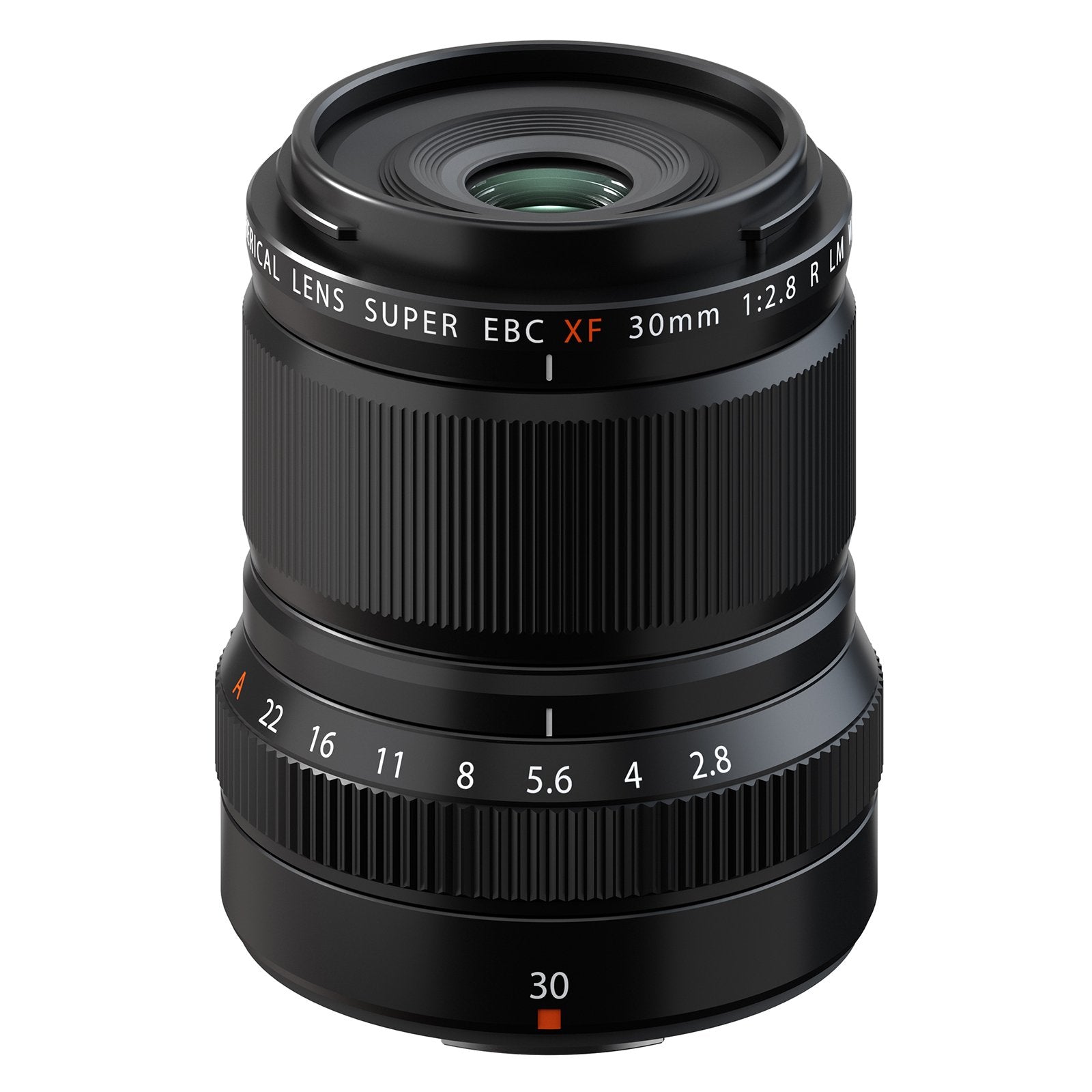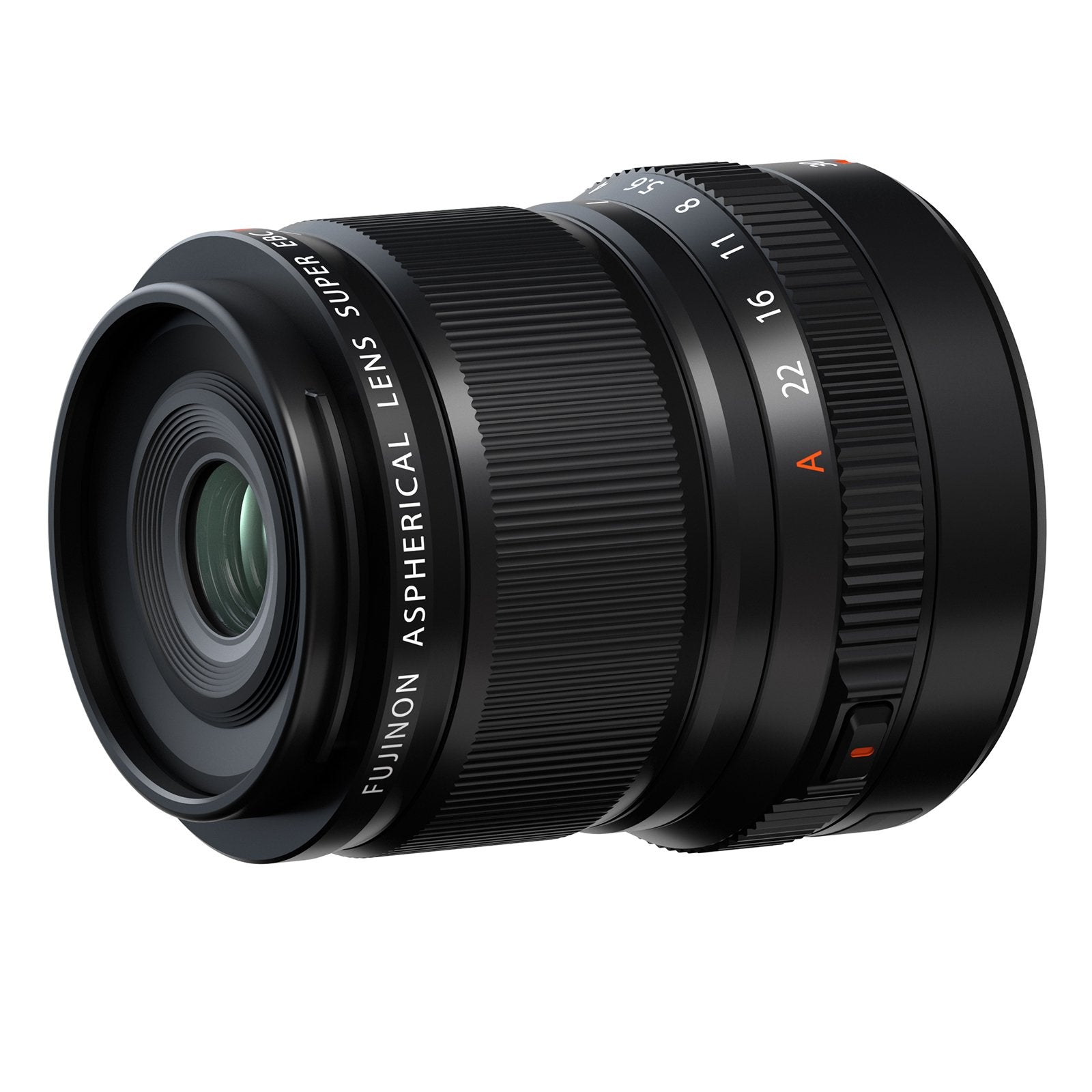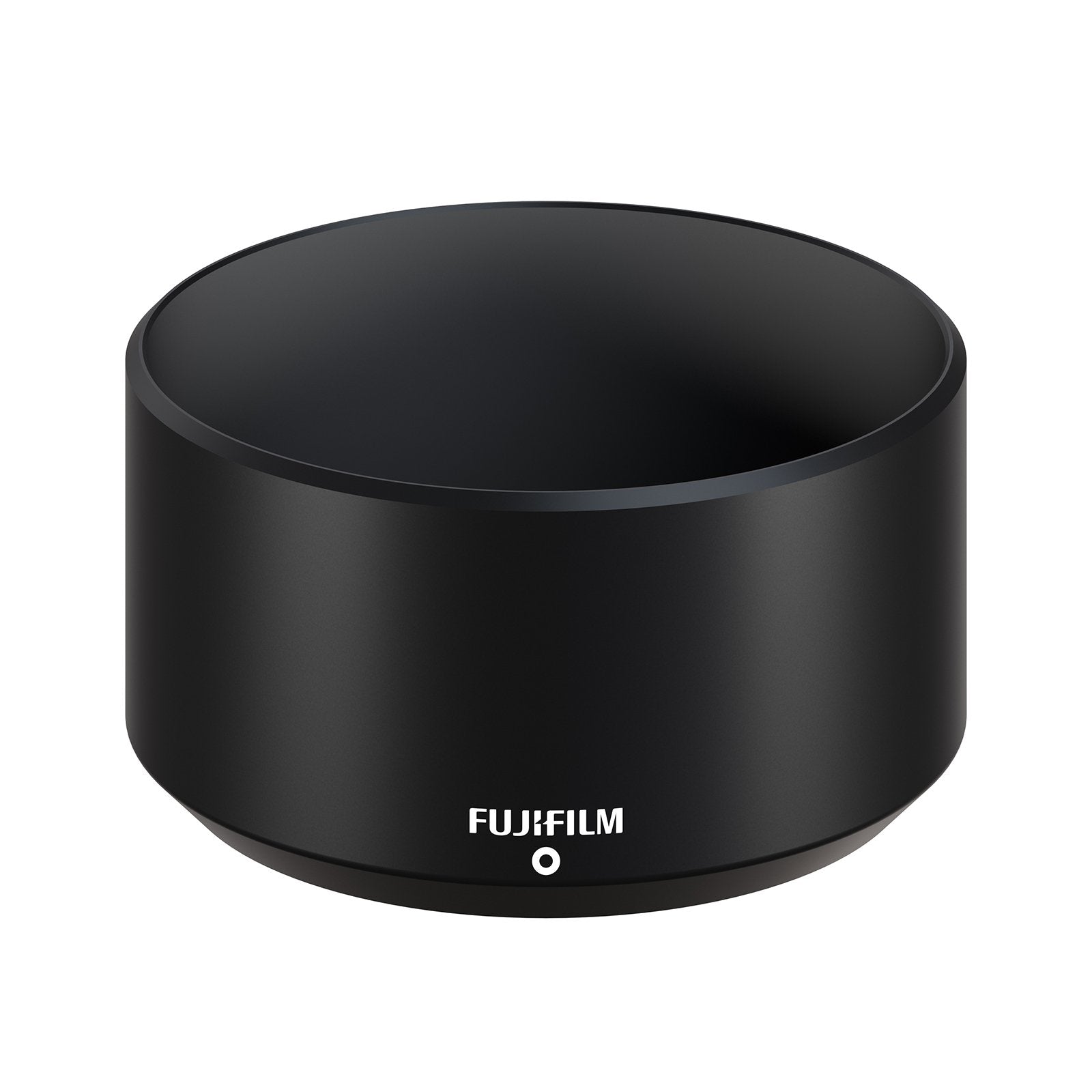Product Description
Fujifilm Fujinon XF 30mm F2.8 R LM WR Macro Lens: Precision and Versatility Combined
Unleash Your Creativity with the Ultimate Macro Lens
Introducing the Fujifilm Fujinon XF 30mm F2.8 R LM WR Macro Lens, an exceptional addition to the X-Mount lineup designed for APS-C format cameras. With a 45mm equivalent focal length (35mm format), this lens offers a perfect balance of macro capabilities and versatile everyday use, making it an indispensable tool for photographers who demand the best in both close-up and general photography.
Key Features
- APS-C Format / X-Mount Lens: Optimized for Fujifilm’s APS-C format cameras, offering a 45mm equivalent focal length that is ideal for a variety of shooting scenarios.
- Aperture Range: f/2.8 to f/22, providing flexibility in different lighting conditions and creative control over depth of field.
- Advanced Optical Design: Featuring three aspherical elements and two extra-low dispersion (ED) elements, this lens minimizes aberrations and distortion, delivering razor-sharp, high-contrast images with stunning color accuracy.
- True Macro Performance: Achieve 1:1 magnification with a minimum focusing distance of just 3.9 inches, allowing you to capture intricate details and tiny subjects with exceptional clarity.
- Lockable Aperture Ring: Ensures precise control over aperture settings, preventing accidental adjustments during shooting.
- Linear Autofocus Motor: Offers fast, silent, and highly accurate autofocus performance, locking onto subjects in as little as 0.02 seconds, perfect for capturing fleeting moments.
- Rounded 11-Blade Diaphragm: Produces beautifully smooth bokeh, enhancing the aesthetic quality of out-of-focus areas.
- Weather-Sealed Design: Built to withstand dust, moisture, and temperatures as low as -10°C (14°F), ensuring reliable performance in challenging conditions.

Detailed Specifications
- Focal Length: 30mm (45mm equivalent in full-frame format)
- Aperture Range: f/2.8 to f/22
- Optical Design: 11 elements in 9 groups (including 3 aspherical elements and 2 ED elements)
- Magnification: 1:1
- Minimum Focusing Distance: 3.9 inches (10cm)
- Filter Thread: 43mm
- Dimensions: 69.5mm (length)
- Weight: 195g
- Weather Sealing: Dust and moisture-resistant, capable of operating at -10°C (14°F)
Why Choose the Fujifilm Fujinon XF 30mm F2.8 R LM WR Macro Lens?
This lens transcends the typical limitations of macro lenses, offering unparalleled versatility and performance. Whether you're capturing the intricate beauty of a flower, the vibrant energy of street scenes, or the serene expanse of a landscape, the XF 30mm F2.8 excels in every scenario. Its lightweight and compact design make it an ideal companion for on-the-go photography, while its robust construction ensures it stands up to the elements.
Versatile by Nature
With a 46mm full-frame equivalent focal length, this lens is perfect for a wide variety of photographic genres, from detailed close-ups to dynamic street photography and everything in between. Its ability to handle high-resolution sensors means it pairs perfectly with Fujifilm’s latest 40-megapixel bodies, delivering outstanding image quality that meets the highest standards.
Optical Precision
Designed to minimize various forms of aberration, the XF 30mm F2.8 ensures that every shot is crisp, clear, and vibrant. The refined optical construction, featuring three aspherical elements and two ED elements, guarantees that your images will have excellent sharpness and color fidelity, making it a top choice for discerning photographers.
Complete Package
Expand your creative potential with the Fujifilm Fujinon XF 30mm F2.8 R LM WR Macro Lens. Its combination of macro capabilities, versatile focal length, and robust build make it a must-have in any photographer’s kit. With its fast, linear motor-driven AF system and hardy weather sealing, this lens is ready for any challenge, ensuring you never miss a moment.
Order Now and Experience the Difference
Transform your photography with the Fujifilm Fujinon XF 30mm F2.8 R LM WR Macro Lens. Order now and elevate your creative vision to new heights. With its blend of advanced technology, superior optics, and rugged design, this lens is ready to help you capture the world in stunning detail and vibrant color.
| LENS CONFIGURATION | 11 elements in 9 groups |
| FOCAL LENGTH (35MM FORMAT EQUIVALENT) | 46mm |
| ANGLE OF VIEW | 50.7° |
| MAX APERTURE | F2.8 |
| MIN APERTURE | F22 |
| APERTURE CONTROL | Number of blades: 9 (rounded diaphragm opening). Step size: 1/3EV (23 steps) |
| FOCUS RANGE | 0.1m-∞ (measured from focal plane) |
| MAX MAGNIFICATION | 1x |
| EXTERNAL DIMENSIONS (DxL) | 60x69.5mm |
| WEIGHT | 195g |
| FILTER SIZE | 43mm |
Try The Kit - Fujifilm Loan

Try Before You Buy – Free Next Day Delivery
Test selected Fujifilm gear with a 48-hour free trial or hire for up to 7 days at a low cost. Book anytime via the 24/7 live system.
How It Works:
-
Book Your Kit: Choose your dates and reserve your gear online, 24/7.
-
Pay a Deposit: A refundable deposit is due before dispatch. You’ll get it back once the kit is returned in good condition.
-
Fast Delivery: Your kit arrives by courier in secure packaging – or collect it from a partner store.
-
Easy Returns: Use the original box and pre-paid label to send it back. We’ll collect it, or you can drop it off.
Visit https://fujifilm-loan.trythekit.com to book yours today.
Fujifilm - General Product Safety Regulation (GPSR)
Payment & Security
Your payment information is processed securely. We do not store credit card details nor have access to your credit card information.




















